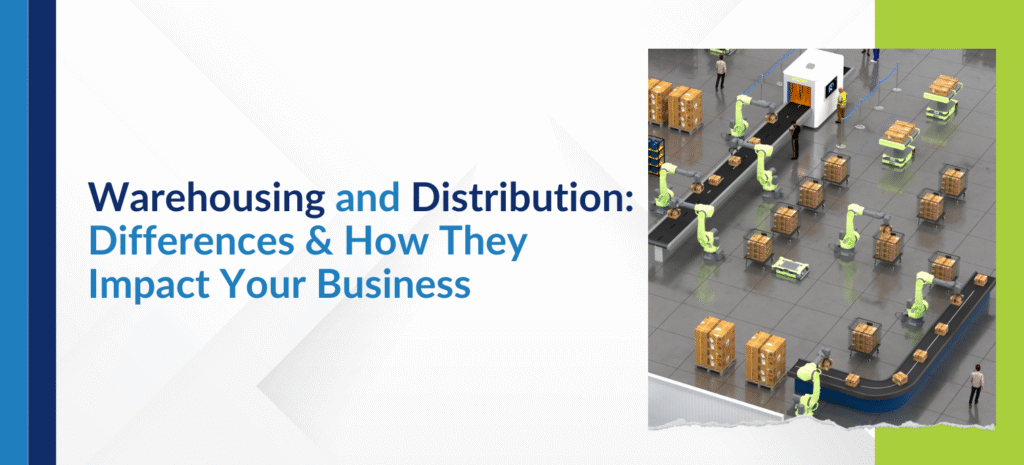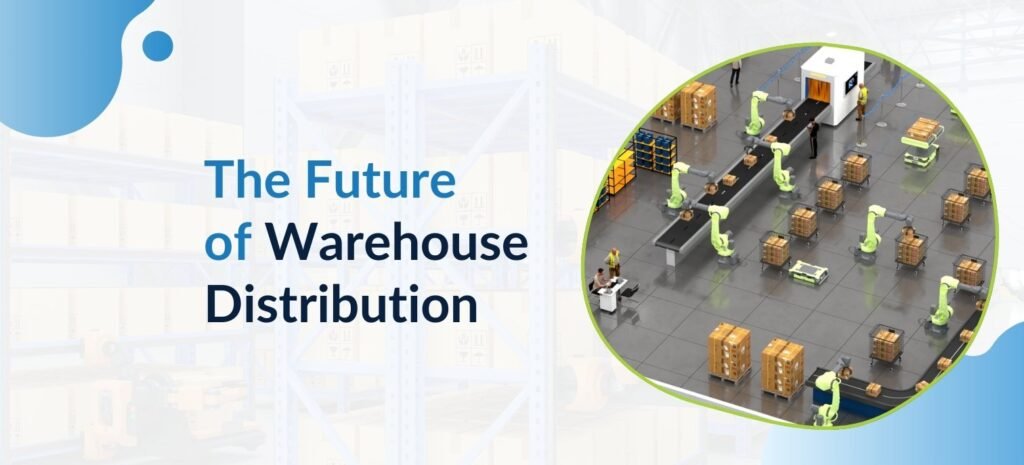In today’s fast-paced business world, understanding the intricacies of warehousing and distribution is essential for maintaining a competitive edge. These two components play pivotal roles in the supply chain, and while they are often used interchangeably, they serve distinct functions that can significantly impact your business operations. In this blog, we’ll delve into the difference between a warehouse and a distribution center, explore the concept of warehousing & distribution, and analyze how they affect your business.
Understanding Warehousing and Distribution
Warehousing refers to the process of storing goods that are awaiting sale or further distribution. Warehouses are designed to hold products for extended periods, providing a safe and secure environment until the items are needed. They are an integral part of the supply chain, offering storage solutions that help businesses manage their inventory efficiently.
Distribution, on the other hand, encompasses the activities involved in delivering goods from the warehouse to the end consumer. This includes order fulfillment, transportation, and logistics. Distribution centers are typically more dynamic than warehouses, focusing on the rapid movement of goods to ensure timely delivery.
The Difference Between Warehouse and Distribution Centre
While both warehouses and distribution centers play crucial roles in the supply chain, they serve different purposes. Here are the key differences:
- Function:
- Warehouse: Primarily used for storing goods for an extended period.
- Distribution Centre: Focuses on the quick movement of goods to their final destination.
- Operations:
- Warehouse: Involves activities like storage, inventory management, and sometimes minor assembly or packaging.
- Distribution Centre: Includes order processing, packaging, and dispatching goods to customers or retail outlets.
- Turnaround Time:
- Warehouse: Goods can be stored for months or even years.
- Distribution Centre: Goods are typically moved in and out within a few days or weeks.
- Location:
- Warehouse: Often located in industrial areas with lower real estate costs.
- Distribution Centre: Strategically placed near transportation hubs to facilitate quick delivery.
The Impact on Your Business
Efficiency and Speed: The primary advantage of understanding the difference between warehousing and distribution centers lies in efficiency. A well-managed distribution center can significantly reduce the time it takes for products to reach your customers, enhancing customer satisfaction and boosting your reputation.
Cost Management: Properly balancing warehousing & distribution can lead to cost savings. Warehouses help in bulk storage, which can lower the cost per unit of storage. Distribution centers, by ensuring rapid delivery, can reduce shipping costs and minimize the need for expensive expedited shipping.
Inventory Management: Effective warehousing allows for better inventory control. With proper storage solutions, you can track stock levels accurately, reducing the risk of overstocking or stockouts. Distribution centers complement this by ensuring that goods are dispatched quickly, maintaining an optimal inventory turnover rate.
Customer Satisfaction: Speedy and accurate order fulfillment is crucial for customer satisfaction. Distribution centers are equipped to handle high volumes of orders efficiently, ensuring that customers receive their products promptly and in good condition.
Flexibility: In an ever-changing market, flexibility is key. Warehouses provide the ability to store seasonal or excess inventory, allowing businesses to respond to market fluctuations. Distribution centers offer the agility to meet sudden spikes in demand, ensuring that customer orders are fulfilled without delays.
Strategies for Effective Warehousing & Distribution
- Integrate Technology: Utilize advanced warehouse management systems (WMS) and distribution management systems (DMS) to streamline operations. These technologies can help in tracking inventory, managing orders, and optimizing routes for delivery.
- Optimize Layouts: Design warehouse and distribution center layouts to maximize space utilization and improve workflow. Efficient layouts reduce the time spent locating and handling goods, boosting overall productivity.
- Focus on Training: Ensure that staff are well-trained in both warehousing and distribution processes. Knowledgeable employees can operate more efficiently, reducing errors and enhancing overall performance.
- Leverage Data Analytics: Use data analytics to monitor performance metrics such as order accuracy, delivery times, and inventory levels. Insights gained from data analysis can help in making informed decisions to improve warehousing & distribution efficiency.
- Partner with Reliable Logistics Providers: Collaborate with logistics providers that have a proven track record of reliability and efficiency. A strong partnership can enhance your distribution capabilities and ensure consistent service levels.
Conclusion
In conclusion, understanding the nuances of warehousing and distribution is critical for any business aiming to optimize its supply chain operations. The difference between warehouses and distribution centers lies in their functions and operations, each contributing uniquely to the efficiency of the supply chain. By effectively managing warehousing & distribution, businesses can achieve cost savings, enhance customer satisfaction, and maintain a competitive edge in the market.
If you’re looking to streamline your warehousing and distribution processes, Novus HiTech can help. Our advanced solutions and expert team are dedicated to optimizing your supply chain, ensuring efficiency, and enhancing customer satisfaction. Visit Novus HiTech to learn more about how we can transform your business operations. Don’t miss the opportunity to elevate your supply chain management—partner with Novus HiTech today!























